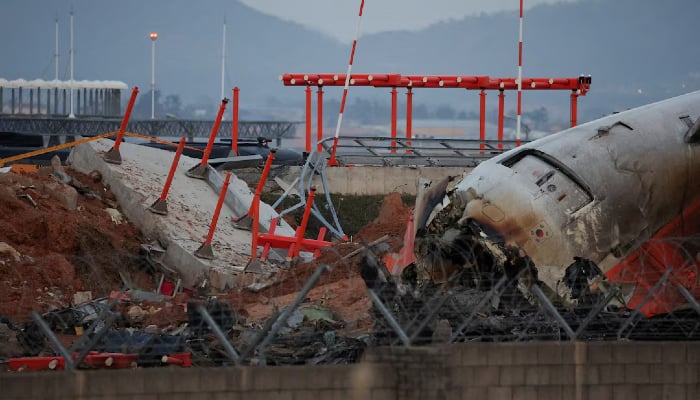
A Jeju Air opens new tab plane that crashed in December during an emergency landing after a bird strike could have kept flying on the damaged engine that was still working after pilots shut down the other one.
According to Reuters, the Boeing, opens new tab 737-800 instead belly-landed at Muan airport without its landing gear down, overshot the runway and erupted into a fireball after slamming into an embankment, killing all but two of the 181 people on board.
Investigators have not yet produced a final report into the deadliest air disaster on South Korean soil, but information about the plane's two engines has begun to emerge.
As per a July 19 update prepared by investigators and seen by Reuters but not publicly released following complaints from victims' family members, the left engine sustained less damage than the right following a bird strike, but the left engine was shut down 19 seconds after the bird strike.
The right engine experienced a "surge" and emitted flames and black smoke, but investigators said it "was confirmed to be generating output sufficient for flight," in the five-page update, which included post-crash photos of both engines.
Experts say most air accidents are caused by multiple factors and caution against putting too much weight on incomplete evidence.








